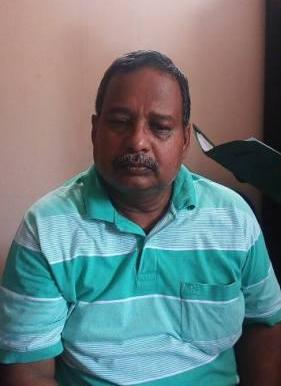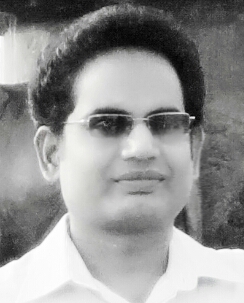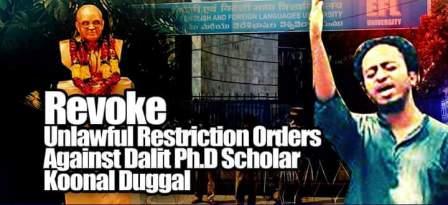Dr. N. Sukumar
The principle of merit is largely undefined. However, the social and economic worth of individuals and institutions are valued on this amorphous principle. Any standard definition of merit will again feed the myth of the “family farm” comprising of parental background, educational alma mater, economic occupations, physicality and geographical location. Needless to say, these privileges are available only to a chosen few who are then considered as ‘meritorious’, ‘worthy’ and the ‘best’. For ages, the idea of merit was instrumental in barring dalit-bahujans, adivasis and women surviving on the margins from the domain of Sarasvati. We need to recall that the edifice of merit is constructed on Eklavya’s thumb.
The autarchic Indian society was rudely jolted by colonialism and in order to create a servile bureaucracy, the British invested in education. Gradually, knowledge became secularized and scriptural traditions were being critiqued by Jotiba and Savitribai Phule, Iyothe Thass Panditar, Pandita Ramabai, Begum Rokeya, Ambedkar and Periyar to name a few. Intense intellectual battles were fought to safeguard ‘pristine tradition’ but women and dalit-bahujans got a foothold in accessing education. After independence, the Constitution provided for reservations in education and employment for the scheduled castes and tribes for socio-economic mobility.
Constitutional Provisions
On January 26, 1950, India ended its ‘Dominion’ status, became a republic, and put in effect its new constitution. The strategy of affirmative action is usually deployed to win over the support of the marginalized or under-represented sections of society. The public policies in support of affirmative action are generally justified in the name of equity, justice and democracy. The underlying goals said to be served by affirmative action policies in higher education generally comprise compensation to the victims of past discrimination and maltreatment, redistribution of resources and opportunities from the privileged sections of society to those worse off, motivating students from lower socio-economic and disadvantaged classes to aspire for better positions in society, better appraisal of students in terms of potentiality and productivity, higher quality education and learning due to prevailing diversity on campuses, better access to social capital in terms of useful contacts and networks for improving career opportunities, improved chances of integrating the societal elite in terms of race and ethnicity, fostering a more legitimate and vital democratic order, etc.
With an entire section dedicated to ‘Fundamental Rights’, the Indian Constitution prohibits any discrimination based on religion, race, caste, sex, and place of birth through Article 15(1). This law extends to all public institutions, such as government-run educational facilities, to access hotels and restaurants, public employment and public wells, tanks and roads. The practice of untouchability is declared illegal by Article 17. Significantly, Article 15, which prohibits discrimination, also contains a clause allowing the union and state governments to make “any special provision for the advancement of any socially and educationally backward classes of citizens or for the Scheduled Castes and Scheduled Tribes.” This provision was added in 1951 within weeks of a Supreme Court decision outlawing quotas in school admissions. The speed of the amendment is indicative of the strong political support for reservations. Similarly, Article 16, calling for “equality of opportunity in matters of public employment,” contains clauses permitting the “reservation of appointments or posts in favour of any backward class of citizens which, in the opinion of the State, is not adequately represented in the services under the State” and another allowing “reservation in matters of promotion” for Scheduled Castes and Scheduled Tribes1.
A separate section of the Constitution, “Special Provisions Relating to Certain Classes,” requires the reservation of seats in the “House of the People,” or Lok Sabha, and the Legislative Assemblies of the states for the Scheduled Castes and Scheduled Tribes2. The numbers of reserved seats are determined by the proportion of the Scheduled Caste and Scheduled Tribe members to the general population, based on population estimates from the most recent decennial census. The President of India and the Parliament, in consultation with the state governments, determine the list of groups qualifying as Scheduled Castes, Scheduled Tribes, and “backward classes.” Regarding the reservation of jobs, Article 335 of the Constitution mandates that the “claims of the members of the Scheduled Castes and Scheduled Tribes shall be taken into consideration, consistently with the maintenance of efficiency of administration.” Finally, a National Commission for Scheduled Castes and Scheduled Tribes3 was created to investigate, monitor, advice, and evaluate the progress of the Scheduled Castes and Scheduled Tribes under the schemes aimed at the socio-economic development of these groups. Another Commission was also created to investigate the conditions of the socially and educationally backward classes. It is interesting to note that reservations explicitly single out certain castes for special preferential treatment. It also contradicts the Constitution’s prohibition on discrimination based on caste, race, and other such criteria. Furthermore, India’s caste system itself, with its strict hierarchy dictated by birth, is at odds with the ideals of equality and social justice.
Reservations or quotas can be methods for promoting affirmative action but are not affirmative action per se. Affirmative action is different from a reservation or quota in that it is open-ended and without any fixed number. Yet all such devices aim at serving as a “corrective” for past governmental, social or individual bias against women, certain individuals, groups or minorities based upon caste, class, creed, gender or ethnicity. The disadvantaged groups have often been subjected to unfair, derogatory or discriminatory treatment for no fault of their own. The scope for affirmative action may or may not be provided for in the constitution itself but it is common to speak of “affirmative action” or “positive discrimination” in the sense of providing justice to those who are ill-treated, discriminated against or under-represented due to inherent socio-economic and cultural traits or of preventing those in power from doing any further wrong to caste/class/creed-based minorities.
It was precisely the denial of social opportunities, sanctioned by law and custom, which pushed vast numbers of dalit-bahujans and adivasis into a life of penury, lacking both cultural and social capital. In order to bridge the gap, affirmative action was made constitution¬ally mandatory so as to enable the deprived populace to regain their dignity. Education, long regarded as a liberating and modernising force, formed an important part of the social justice campaign. But although the Indian welfare state recognises its moral obligation to guarantee every child an education, this is a dream that is still far from being realised. The first generation of learners from the marginalised communi¬ties must not only come to terms with an alien curriculum, they must also battle entrenched pedagogical prejudices. The debate on reservations in the public domain intensified when V. P. Singh announced the implementation of the Mandal Commission Report in 1989. It lead to widespread protests and renewed the debate on caste based reservations and its efficacy.
Merit and the Language of Hate
As observed by Uma Chakravarti, at the height of the anti-Mandal agitation in Delhi, newspapers carried photographs showing women college students in Delhi demonstrating in the streets. They were carrying placards that read ‘We don’t want unemployed husbands’!4 Women students protested not for themselves but on behalf of their potential husbands. In Lucknow, medicos and other students were polishing shoes and cleaning cars and taking out processions in which they ply rickshaws – to make the point that this is what they are likely to end up doing if the Government reserves more jobs5. Such prejudiced expressions in the public domain reflect the sense of entitlement embedded amongst the upper caste ‘meritocracy’ who are unwilling to relinquish their hold on intellectual resources. This has prevented the implementation of reservations and there is negligible representation of dalit-bahujans in academia. Till date, the 200 point roster model was utilized by the UGC/MHRD to ensure fair representation such as 27% for OBCs at entry level (Assistant Professors), 15% for SCs and 7.5% for STs at all levels. In an RTI response, the UGC furnished the following data as on 30th June 2016 for faculty positions in all Central Universities, across all categories as per the 200 point roster

If fairly implemented, this would ensure that out of 200 posts, 99 will go to SC, ST and OBC and 101 will be left for general category. However, this seldom happened and the Allahabad High Court6 found this system faulty and ordered for reservations to be applied department wise. Hence, the 13 point roster was reintroduced. This would prevent any SC/ST/OBC candidates from nursing academic and employment ambitions. If the department is considered as a unit, in smaller departments with less than seven seats, departments with specialized categories like Indian History, European History, Medieval, Modern, Ancient History etc, specialized area studies programs, chairs etc the doors are shut for dalit-bahujans. However, in all its wisdom, the court failed to mention anything about the existing backlog in faculty recruitment and how this issue will be addressed.
The fine print of the Allahabad Court judgment7 requests the UGC to deliberate over the subject with the MHRD and then decide the course of action. On the contrary, the UGC sought to implement the decision and many universities like BHU and Central Universities of Punjab (CUP) and Tamil Nadu came out with notifications for faculty recruitments. The CUP advertised on 1st July 2018 (Advt. No. CUPB/18-19/003), for 57 positions in different departments for all positions. All 15 Professors and 25 Associate Professors and 12 Assistant Professors are unreserved. There are only two positions for OBCs and 3 for PWD at entry level. In Central University of Tamil Nadu, (Advt No 04/2018, dated 14/06/2018) out of 39 positions advertised at various levels, all are for unreserved category. There are two PWD positions under the same category. The Central University of Rajasthan, (Advt No, CURAJ/R/F.99/2018/761, dated 25th May 2018), advertised for 33 positions at various levels and all are unreserved in different departments. In the same category, two positions are reserved for PWDs.

~

Unraveling Modinomics
Ideologically, the RSS-BJP government is against any notion of reservations as it invalidates their metanarrative of ‘Hindu brotherhood’. If they acquiesce to reservations, they need to admit the existence of caste, which is akin to committing political hara-kiri. Akhand Bharat and Mandal are antithesis to each other. The past few years have witnessed repeated agitations by Patidars, Jats, Marathas and Kapus. In order to satisfy them, the government announced 10% for the economically weaker sections among the upper castes. This policy is riddled with contradictions. In the absence of a caste census, how is the weaker section enumerated? Any person with a land holding of one acre is worth lakhs if not crores in urban areas. As per the income tax ceiling in India, if your income is two and a half lakhs per annum, you need to pay your taxes. How does one justify then that an income of eight lakhs per annum makes one economically poor? Even an assistant professor in any state or central university does not earn eight lakhs per annum. The same income is the creamy layer slab for OBCs. How does one rationalize Modinomics?
Such desperate measures violate the constitutional provisions for reservations as representation under Articles 15 and 16. When the Women’s Reservation Bill and Reservation in the Private Sector Bills are pending for ages in Parliament, within 48 hours, the 10% quota was rushed through both Houses of Parliament. Is it to appease the upper castes post the defeat in the recent state elections? With unseemly haste, UGC and MHRD rushed to implement the fresh orders from the current academic year. This begs the question, what about the backlog vacancies in the SC/ST and OBC positions which are yet to be calculated and filled. The brahmanical institutions were never interested in filling up these posts. Clearly the powers that be have goofed up their math.
On 29th January 2019, the Honourable Prime Minister pontificated on exam stress via ‘Pareeksha Pe Charcha’. Who will alleviate the stress experienced by this nation through the midnight robbery of demonetization, RBI and CBI crisis, mob lynching, citizenship woes, widespread misogyny and hatred? When will ‘naukri pe charcha’ happen? To illustrate, there are around 5000 adhoc, temporary, guest teachers in Delhi University and constituent colleges. Some of them have been teaching for decades. Their positions were filled as per the 200 point roster. If the 13 point roster is implemented in Delhi University, 90 % of them will be jobless. Maybe they should turn self employed by selling ‘pakodas’ after working hard to achieve PhDs, NET/JRF and years of teaching and research experience. For a change, listen to their ‘mann ki baat’.
Gandhi observed that his mission in life is to wipe every tear from every eye. Nehru in his ‘Tryst with Destiny’ said that the “The ambition of the greatest men of our generation has been to wipe every tear from every eye. That may be beyond us, but as long as there are tears and suffering, so long our work will not be over.” For the descendents of Golwalkar and Savarkar, please remember as Ambedkar said, you cannot make history if you forget history.
~
Notes
1. The Constitution defines the “State” as the “Government and Parliament of India and the Government and the Legislature of each of the States”
2. The draft constitution, produced by the Constituent Assembly’s Drafting Committee headed by B.R. Ambedkar, included Muslims and Indian Christians among the beneficiaries of reservations in legislatures
3. In 1990, a five-member commission replaced the Officer for Scheduled Castes and Scheduled Tribes
4. Uma Chakravarti, Gendering Caste Through Feminist Lens, Stree, 2006, p.3.
5. Saba Naqvi Bhaumik, Decision to implement Mandal Commission report stirs up protests across India, September 30, 1990, https://www.indiatoday.in/magazine/special-report/story/19900930-decision-to-implement-mandal-commission-report-stirs-up-protests-across-india-813545-1990-09-30, Accessed 17th Jan 2019, 10.40 pm
6. SLP ( C ) Diary No 14318/2018, Supreme Court of India, Record of Proceedings, Section XI
7. Court No 37, Writ-A No-43260 of 2016, Allahabad High Court Judgment Copy, 7/4/2017
~~~
N Sukumar is Professor of Political Science in Delhi University. He can be reached at skn70@yahoo.com










